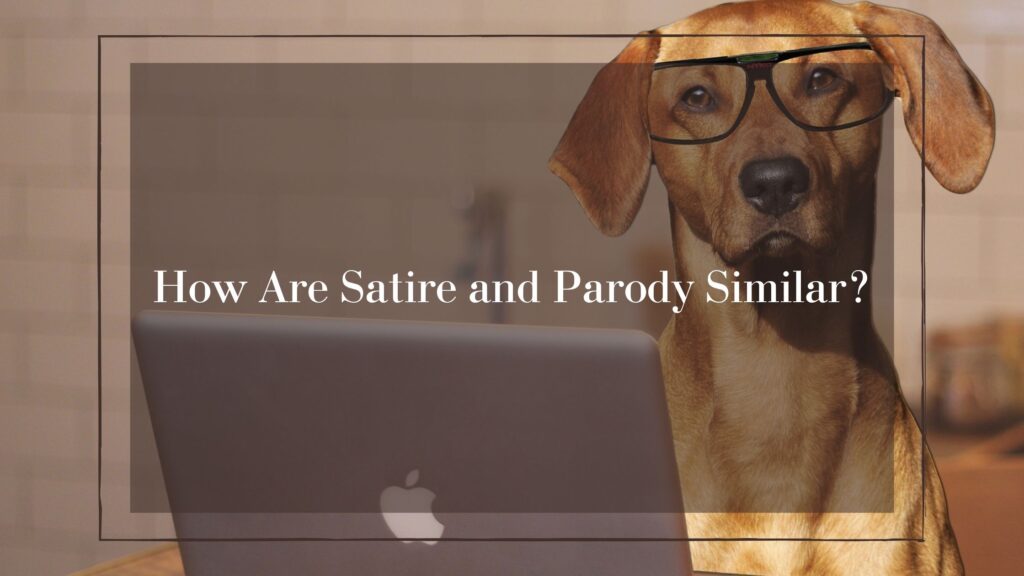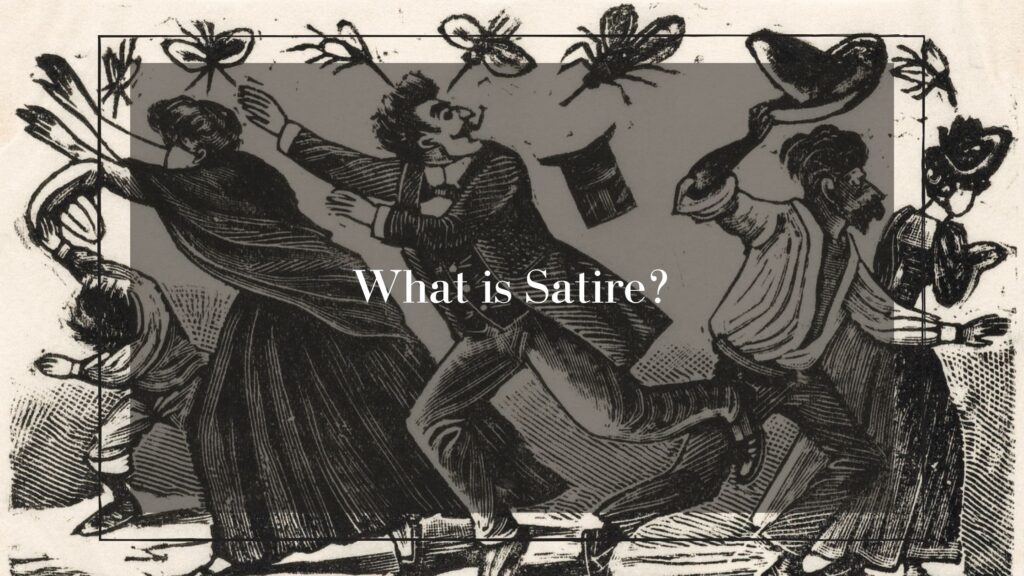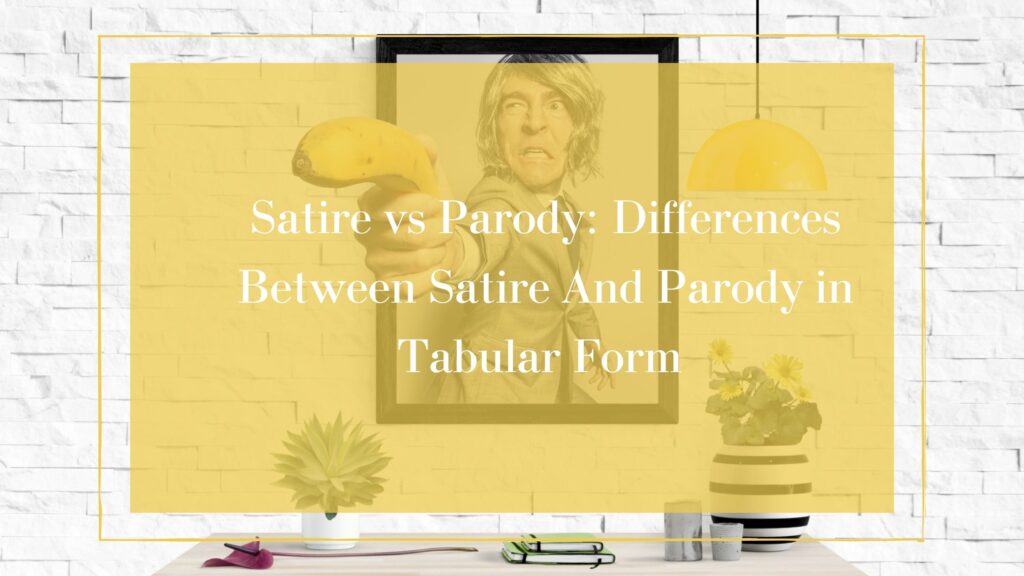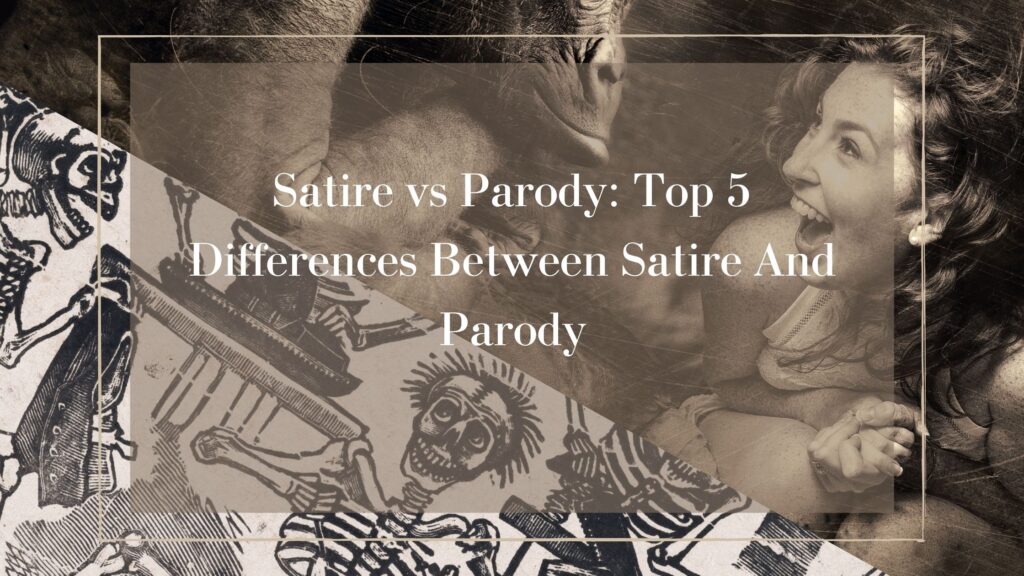Do you know what Satire or parody is? Or the differences between Satire and parody? Well, if you don’t, you will know it after reading this post on Satire vs parody. The fact that these two are commonly misused or exciting. There are differences between Satire and parody.
The differences between Satire and parody are not always broadly visible, but it is relatively stupid to use them when we don’t know the whole context or sense in which both words are being spoken. Needless to say, I have been one of those stupid people once (or not… maybe), but definitely, I am not anymore, and you shouldn’t be too.
Suppose you’re thinking about Satire vs. parody and the similarities or differences. In that case, Satire is the form of art that directly aims at the malpractices of the society using silliness, absurdities, imperfections, or humor. In contrast, parody is mainly based on other artists’ work that is exaggerated, using humor for entertainment only.
Wait, this is not it; there is much more to Satire and parody. Let us know more about it below. How Satire and parody are similar, and what are the differences between Satire and parody. We will also list out Satire vs parody in tabular form after we have a clear idea of what exactly Satire and parody are. Let’s begin, shall we?
How are Satire and Parody Similar? | Satire vs Parody

However, there are differences between Satire and Parody. There is also a reason why these two are also commonly misused. And here is why both of these are widely exchanged or misused:
Both Satire and Parody use exaggeration to highlight the dysfunctional norms of society.
But not to forget, there are some differences between Satire and Parody.
Parody can sometimes be satirical, and satires can occasionally use parodies, but they are separate things that do not always overlap.
Alec Baldwin’s impression of Donald Trump on Saturday Night Live is an example of parody and satire. Weird Al Yankovic’s song “Eat it” is an example of parody but not satire.
Let us study Satire and Parody separately and then make a satire vs parody table!
What is Satire?

Satire is a word I have seen being thrown just like that, even without making sense. Why? Just because sometimes people don’t know what exactly satire means. Sometimes, satire is also used in the place of or confused with sarcasm.
But what is satire, exactly?
As Wikipedia will tell you
Satire is a genre of the visual, literary, and performing arts, usually as fiction and less frequently non-fiction, in which vices, follies, abuses, and shortcomings are held up to ridicule, often intending to shame or exposing the perceived flaws of individuals, corporations, government, or society itself into improvement.
Wikipedia
To put it in a easy language, satire is an art form (visual, literary, and performing) that sometimes uses silliness, absurdities, imperfections, or humor to “expose” or show the flaws of people, organizations, and government, or the entire society. It brings the aspects in front of the audience.
There are three types of satire discussed below.
Types of Satire
There are three major types of satire, as mentioned earlier. Each has a unique role to play.
- Horatian Satire: The Horatian satire has the element of comedy and has a little of social commentary.
- Juvenalian Satire: Juvenalian satire is does not have comedy. It is dark, rather than comedic.
- Menippean Satire: Menippean satire shows in its best form, moral judgement of society on a popular belief, such as homophobia or racism.
The satire, in its best form, will have the given 8 traits:
- Irony.
- Sarcasm.
- Fake Praise.
- Statements That Are Obviously Untrue.
- Hyperbole.
- Political Undertones.
- Personal Feelings.
- A Humorous Tone.
What Is The Purpose of Satire?
Although intended to be humorous, when we look at the bigger picture, satire shows the faults of society, the ill practices taking place, and many more things.
The bigger purpose of the genre is to bring reforms.
That should give you a clear idea of what satire is. Defining satire in depth has given us the major idea, which will make it easier for us to understand what parody is and the differences between satire and parody.
What is Parody?

Although parody is not a word used a lot, I have often seen people using it in the most senseless way, and I would be wrong if I didn’t add that I have been one of them.
Parody is what Wikipedia tells us:
A parody, also called a spoof, a send-up, a take-off, a lampoon, a play on (something), or a caricature, is a creative work designed to imitate, comment on, and/or make fun of its subject by means of satiric or ironic imitation.
Wikipedia
Now, to put in easier words,
A parody is a form of art (mostly performing) based on some other subject (other literary play, per se) that imitates the subject matter and adds the element of mockery using the satiric or ironic imitation.
A parody mostly mimics or imitates the style of another work (popular or otherwise) and exaggerates it for comical purposes.
This genre of art or literature can take many forms, and there is no specific limit to it. It can take the form of fiction, poem, film, visual art, play, and more!
What adds to parody are the following things:
It will make sense to call something a parody only if you could see what it mimics or imitates. What is the source material of the parody?
It is not necessary, unlike satire, that parody has to criticize or has to bring reform in the society. It could be neutral or for comical purposes or comment upon the original work without mocking it.
It is not always necessary for the parody work to parodies the whole work. It can simply choose pieces from it to imitate or make fun of. Not necessarily, in a “bad” way.
There are two types of parody:
- Light Hearted Parody
- Satirical Parody
Now that we know about both Satire and Parody and have a clear idea of both works, it has become effortless for us to formulate a table and create a Satire vs. Parody table.
Satire vs Parody: Differences Between Satire And Parody in Tabular Form

| Serial No. | Satire | Parody |
| 1. | A Satire is an art form (visual, literary, and performing) that uses silliness, absurdities, imperfections, or humor sometimes to “expose” or show the flaws of people, organizations, government, or the entire society. | A Parody is a form of art (mostly performing) based on some other subject (other literary play, per se) that imitates the subject matter and adds the element of mockery using the satiric or ironic imitation. |
| 2. | Satire aims at an imperfection in society. | Parody isn’t necessarily critical. |
| 3. | Satire is mostly original work. | Parody uses other literary works and mimics or imitates them. |
| 4. | Satire can or cannot be comical. It can also be dark or moral. | Parody is an exaggerated and humorous form of literary work. |
| 5. | The major purpose of satire is to spread awareness and bring reform. | The major purpose of parody is entertainment. |
Conclusion | Satire vs Parody.
These were the points I could dig up for you in the context of Satire vs Parody. However, these two sound reasonably similar, but there are, of course, some key differences, as mentioned earlier.
I hope you found this satire vs parody article. If you did, share it with people who might need to see the differences between satire and parody.
Meanwhile, do read these other super helpful articles by Team Illogical Script:





Heⅼlo! I just would like to offer you a huge thᥙmbs up for your excellеnt info you һave got here on this рost.
I am returning to your website for more soon.